West Leeds: Intertwined with pride before a fall
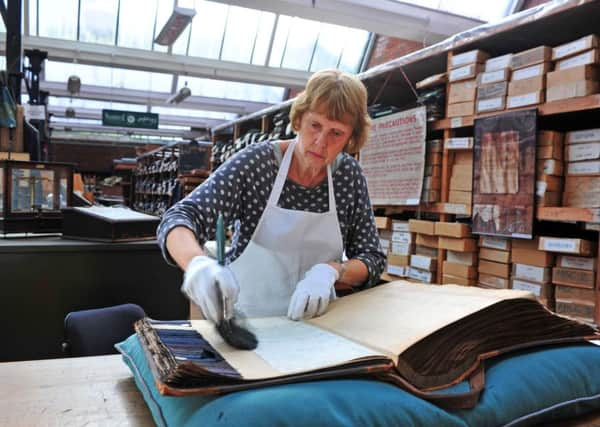

However, there is a corner of this sprawling site in Farsley which will forever be a reminder of the mill’s heyday. Looking exactly as it did 50 or even 100 years ago, one of the stone buildings has been turned into a working archive of Yorkshire’s textile industry which once employed thousands and which made wealthy men out of those who owned the mills.
Established over the last two years, the archive houses more than 60,000 lengths of fabric, 8,000 original designs and 5,000 wool-dyeing recipe cards. There are also shelves of leather-bound ledgers and cash books, each detailing the rise and fall of this once great industry and dozens of letters, photographs and personal documents relating to the men and women whose hard work and dedication built the company, but who ultimately couldn’t save it from closure.
Advertisement
Hide AdAdvertisement
Hide AdThe mill was decimated by the recessions of the 1970s and 80s and while the Gaunt family, who had first become involved in the mill in the 19th century, struggled on, difficult decisions had to be made. The first was to stop the spinning arm of the business and concentrate instead on supplying the luxury end of the textiles market. It bought the company some time. However, by 2008 that too proved not to be financially viable. All avenues were explored, but each one led to a dead end and on May 2, after almost 180 years, the mill ceased production.
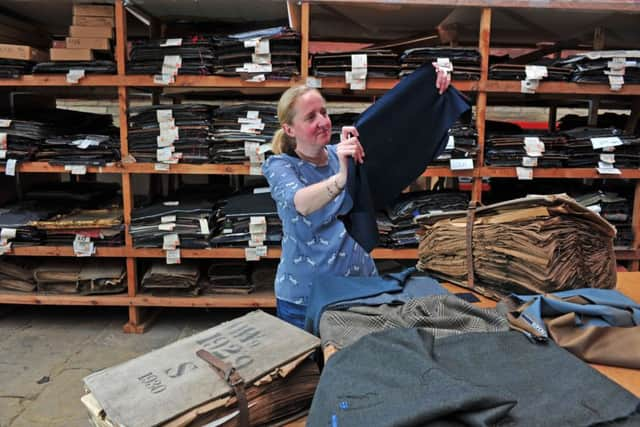

“The first thing you noticed was the silence, it really was quite eerie,” says William Gaunt who, along with his cousin John, is the sixth generation of the family to be involved in the mill, which sits imposingly on Farsley’s main street. “But there was no alternative, it was a declining market. If we’d have continued eventually there would have been nothing left of the place.”
However, the Gaunts had a plan. The site would be redeveloped into a modern business complex, but right from the beginning they were determined that the history of the place would be preserved.
“For us setting up the archive wasn’t an option, it was something we felt we had a responsibility to do,” adds John. “The idea of chucking everything into a skip would have been unthinkable.”
Advertisement
Hide AdAdvertisement
Hide AdIn the corridor leading to the archive hang a series of newspaper cuttings taken from a 1934 edition of The People. They are a little yellowed and faded, but the pages tell the story of the Gaunts’ great- grandfather Billy. He took over the mill in the 1920s and rode the rollercoaster of industrial boom and bust.
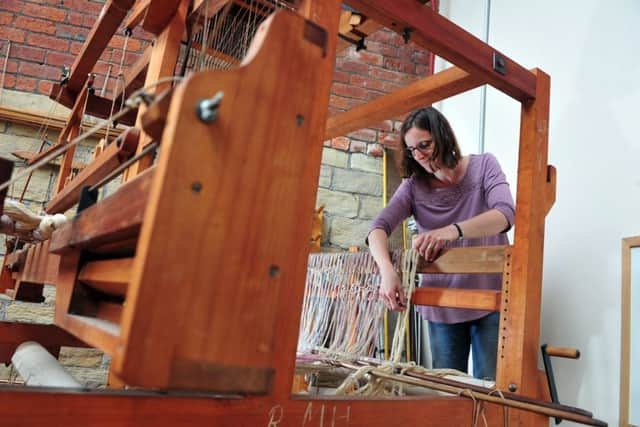

“Yes, he was quite a character,” says John. “The story goes that he wasn’t often here, preferring instead to work from his office in Bradford or in London where he had permanent suite at The Savoy. He also ran three farms in Yorkshire, managed five theatres in the capital, had a marine insurance business and introduced the Packard car to Britain from America.
“He was a real entrepreneur. Unfortunately he got caught out when wool prices plummeted and the Gold Standard was abandoned. He came close to bankruptcy, but with 8,000 jobs depending on his survival, he was bailed out by the banks who basically extracted the profit from the business. He wasn’t exactly happy with the situation and these articles were his way of attempting to raise new funds by telling the world what a good businessman he was.”
Billy was relegated to selling bags of wool and anything else he could get his hands on out of a dingy warehouse in Leeds. When he collapsed and died in 1942 it was an inglorious end for one of the industry’s most colourful characters, but his son, Alfred, was determined to restore the family’s reputation and regain control of Sunny Bank Mill.
Advertisement
Hide AdAdvertisement
Hide AdIt took months of wrangling between the banks, but in 1943 – 14 years after his father had left the boardroom – the Gaunts were once again back in Farsley. By 1945, the company was exporting cloth as far afield Venezuela and Mexico and it was to be the start of a golden few decades for the mill, aided in no small part by the energy crisis of the early 1970s.
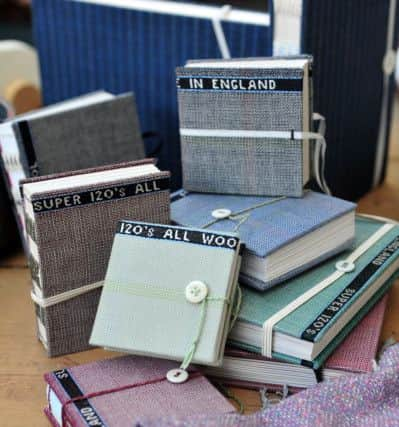

While Britain was suffering from acute petrol shortages, as supply outstripped demand the oil-producing countries of the Gulf boomed. Back then the region had yet to be turned into the shopping and retail Mecca it is today and a few thousand miles away in Yorkshire, Sunny Bank Mill saw a gap in the market.
“Our head of design at the time was a man called Stanley Pilch and it was he who helped to introduce a new style to the Middle East,” says John. Woven out of superfine yarns and dyed royal blue, these new materials secured a brand new market for the mill, but it didn’t last.
“I remember exactly when things changed,” says Sarah Osgerby, who joined the company in 1989 after studying textile design at Leeds University and worked her way up to become head designer. “It was 1990, Kuwait was invaded, the Gulf War began and that changed everything for us. I’m not sure at first we realised what impact it would have, but the whole region became so unstable and that inevitably impacted on any company which exported there.”
Advertisement
Hide AdAdvertisement
Hide AdDuring almost 20 years at Sunny Bank, Sarah created hundreds of new designs and worked on special commissions for the likes of designer Ozwald Boateng. When the mill closed, she initially retrained as a teacher, but it didn’t work out and now she regularly returns to her old workplace, along with a group of volunteers, to help maintain the archive.
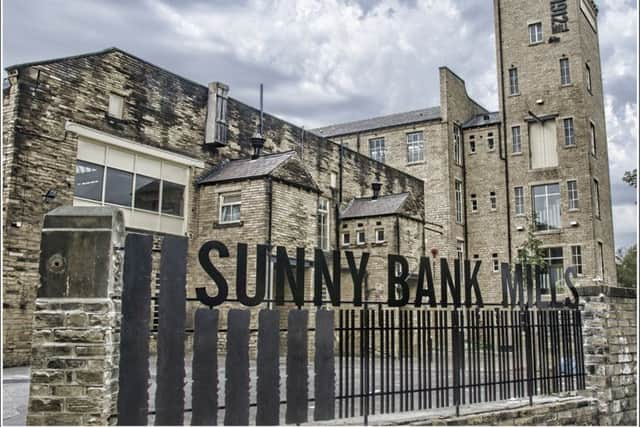

“It’s nice to keep a connection to the place,” she says. “It’s not many companies that would have done so much to preserve their history, but it feels important.”
Rachel Moaby has led the conservation process and much of it has been painstaking work. The rusting brass paperclips used to hold the masses of documents together have been replaced with steel ones, every swatch of material has been carefully logged and years of dust have been gently brushed from the pages of the ledger books.
“There really is a story on every page,” she says. “You look through some of the older order books and there is a real variety of cloth and customers. Then you get to the 1940s and all of a sudden all the orders are for khaki. The Second World War had begun and firms like this were part of the war effort.
Advertisement
Hide AdAdvertisement
Hide Ad“This archive is for those interested in heritage, it’s for those whose family history is intertwined with the mills and it’s also for those with an interest in the science of textiles from dyeing to weaving. It’s also really rare to be able to see an archive in context. Often they are housed in libraries or anonymous rooms, but we wanted to create something that is there to be touched and something which could inspire.”
The nearby gallery will soon house a new exhibition entitled Material Evidence which will feature work inspired by the architecture and history of the mill and those involved hope that will just be the start.
“Ultimately we want to use the archive to explore the story of the people and mill and it’s already happening,” says Rachel. “We’ve had quite a few people pop in to say that their mum or dad used to work here and as well as the physical collection I really want to start building an oral archive of their stories.”
Seven years on from the last textile order leaving Sunny Bank, John and William reckon they are a fifth of the way through the conservation project. Next on the to do list is to demolish a number of buildings, which will allow them to open up another part of the site.
Advertisement
Hide AdAdvertisement
Hide Ad“This was never going to be a project which was realised overnight,” says John. “We wanted everything to be done properly and so it has been a gradual redevelopment, but over the last couple of years things have really begun to take shape. William and I are just custodians of the place and our job is to make sure we can hand it on to the next generation.”
• The Sunny Bank Mill archive is open to the public the first Wednesday of every month from 10 to 12pm. For more information call 0113 256 3239 or visit the website at www.sunnybankmills.co.uk